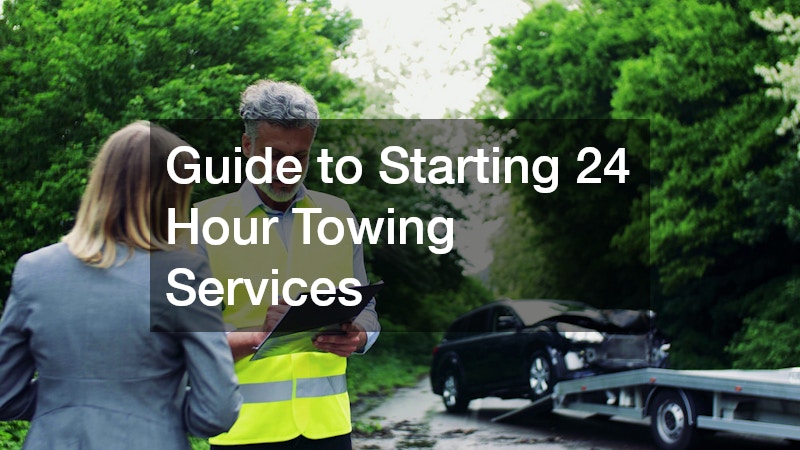Start your journey into the world of 24 hour towing services with our comprehensive guide. This article will explore the essential aspects, from business planning to operational intricacies, so you can effectively tap into this crucial service industry.
1. What are the initial steps in setting up a 24-hour towing service?
1.1 Business Planning and Research
Launching a 24-hour towing service begins with robust business planning and research. Conducting thorough market research and competitive analysis helps to understand the landscape and identify opportunities for differentiation.
A well-crafted business plan serves as a roadmap, detailing financial projections, operational strategies, and marketing plans. It’s essential to identify your target market and tailor your services to meet their specific needs.
Additionally, securing sufficient startup capital and creating a sustainable financial model is crucial. Carefully planning ensures that resources are allocated effectively, mitigating potential business risks.
1.2 Legal Requirements and Licensing
Meeting legal requirements is a critical step in setting up your towing business. Obtaining the necessary permits and licenses is imperative to operate within the legal framework.
In addition to licenses, investing in a comprehensive insurance policy protects your business from liabilities. Towing companies must adhere to industry regulations to maintain their licenses and uphold business credibility.
Understanding local laws concerning vehicle towing, storage, and release processes is essential. Staying compliant with state and federal regulations helps avoid operational disruptions and legal penalties.
2. How to choose the right towing vehicles and equipment?
2.1 Types of Tow Trucks and Their Uses
Towing vehicles vary based on the services offered, and choosing the right ones is vital for operational success. Flatbed, hook and chain, and wheel-lift tow trucks serve different purposes depending on the job’s complexity.
Flatbed tow trucks are popular for their versatility in towing anything from motorcycles to SUVs. In contrast, hook and chain tow trucks are used for older vehicles or those requiring scrap removal.
Wheel-lift trucks provide a cost-effective solution for standard vehicle towing needs. Each type has its specialized application, making it essential to evaluate your service portfolio when acquiring vehicles.
2.2 Essential Towing Equipment
Aside from trucks, investing in the right towing equipment is essential for a complete operation. Winches, chains, and safety gear form the backbone of daily towing activities.
Winches are crucial for difficult recovery scenarios where vehicles need to be pulled from challenging spots. Heavy-duty chains offer the strength and reliability required to secure vehicles during transit.
Safety gear ensures both operator safety and client satisfaction, enhancing service quality. These fundamental tools help in efficiently executing diverse towing tasks while maintaining safety protocols.
3. What are the best strategies for marketing a towing service?
3.1 Online and Local Advertising
Marketing your towing service effectively involves a mix of online and local strategies. Leveraging digital platforms such as social media and search engine optimization can significantly boost visibility.
Creating a user-friendly website and maintaining an active online presence builds credibility and attracts customers. Traditional marketing methods like flyers and local partnerships remain valuable for community-based outreach.
Engaging with local businesses and automobile clubs can create a referral network. Utilizing a multi-channel approach ensures that your service reaches potential clients across various touchpoints.
3.2 Building Partnerships and Networking
Partnerships with local businesses and organizations serve as vital marketing conduits. Establishing relationships with car dealerships and repair shops can lead to regular business referrals.
Networking at industry events and community activities helps to build a trusted brand presence. Roadside assistance programs are also strategic partners due to the direct relevance to towing services.
Effective networking opens avenues for collaboration, offering mutual benefit and steady business growth. These relationships often become the backbone of a successful towing operation.
4. How to manage operations and ensure 24/7 availability?
4.1 Staffing and Scheduling
Efficient staffing and scheduling are critical for maintaining 24/7 operational readiness. Hiring qualified and trained personnel ensures that your team is equipped to handle diverse towing scenarios.
Creating a flexible schedule that aligns with fluctuations in demand supports continuous service availability. Effective scheduling also takes into account employee well-being, reducing burnout and turnover.
Implementing a robust training program enhances skill development and service standards. These strategies contribute to operational efficiency and reliability, upholding your service promise.
4.2 Implementing Efficient Dispatch Systems
An efficient dispatch system is pivotal in managing service requests and driver assignments. Investing in dispatch software streamlines job allocation, enhances communication, and increases response time.
These systems offer real-time tracking and reporting, providing strategic insights into operational efficiency. Improved communication between dispatchers and drivers ensures seamless workflow and customer satisfaction.
The integration of GPS-enabled technology enables precise location tracking, reducing delays. Efficient dispatch technology acts as the command center, ensuring coherent operations across all service areas.
5. What are the challenges, and how to address them in a towing business?
5.1 Handling Unpredictable Demand
The towing industry often faces unanticipated demand surges due to weather changes or accidents. Implementing flexible resource management minimizes disruptions during peak times.
Maintaining an adaptable fleet equipped for varied tasks can cater to unexpected demand efficiently. Staffing with on-call personnel ensures the capacity to handle high-pressure situations effectively.
Communication with clients about estimated response times builds trust and manages expectations. Predictive analytics in demand forecasting improves preparedness and resource allocation.
5.2 Managing Customer Service and Expectations
Delivering exceptional customer service can often differentiate a towing business in a competitive market. Establishing clear communication and setting accurate expectations are vital starting points.
Handling customer complaints promptly with empathy helps in building a positive reputation. Creating feedback loops through surveys or direct contact allows for continual service improvement.
Training staff to manage difficult interactions professionally ensures consistency in customer experience. Strong customer relations are built on reliability, attentiveness, and a commitment to service excellence.


